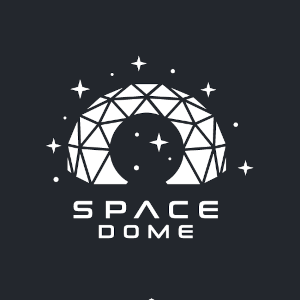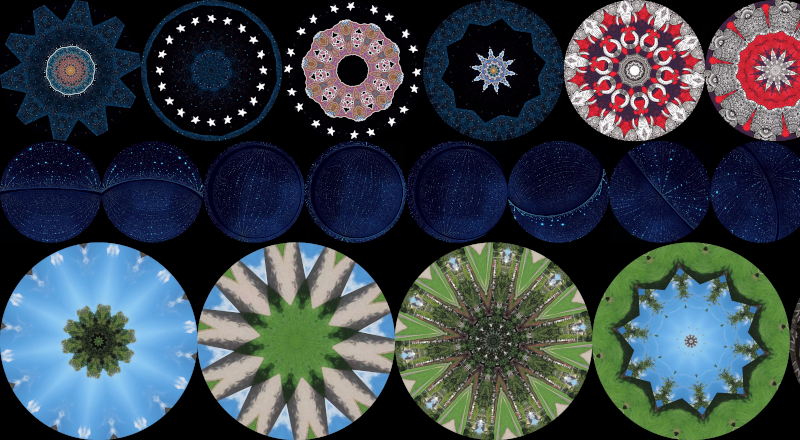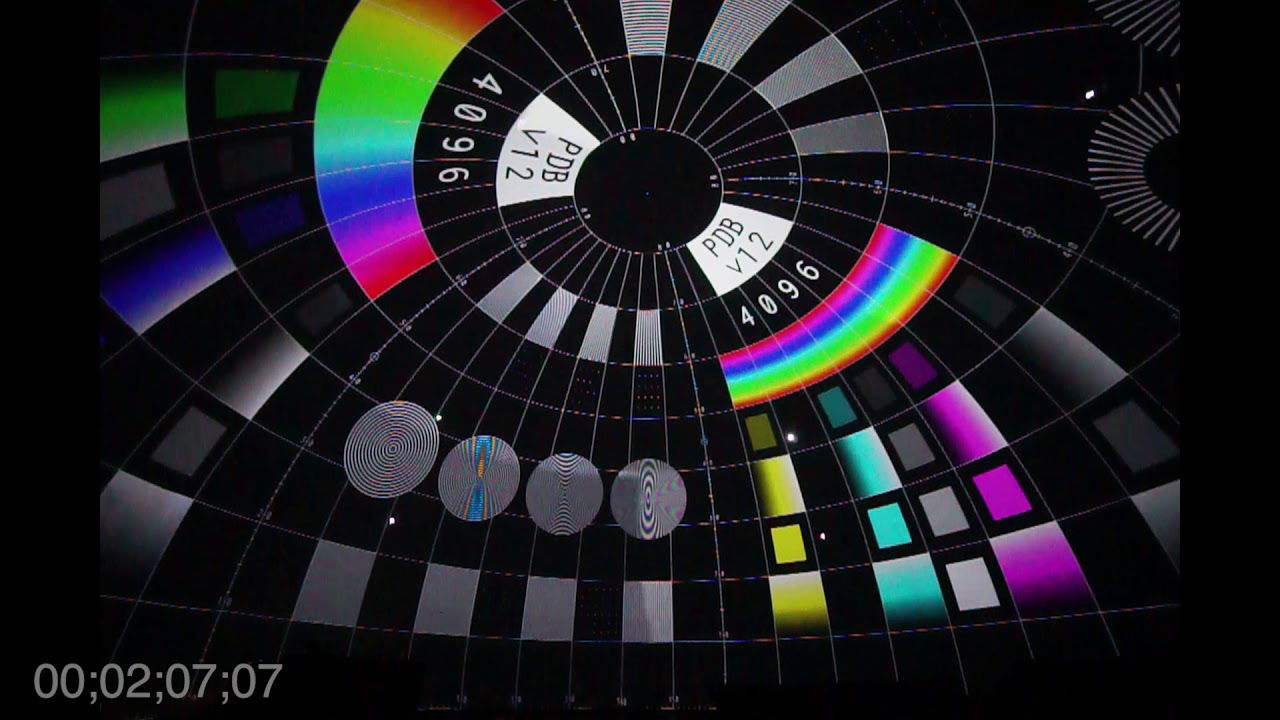Introduction
Last update: Nov 2, 2021Spacedome is a 30m² geodesic dome structure build with the intention of projecting fully immersive video content, so basically a virtual reality like experience but without glasses and as a group.
Shows
Last update: Nov 2, 2021Some shows are purchased or borrowed from their rightful owners, others where made by me. Below is some of my own content, the last show is made by Diana Reigenbach, an immersive artist that was so kind to put her creation in the public domain.
format
The format of these video's is called dome master, ofcourse the left side of the picure is shown on your left, the upper side behind you etc, basically like a fish eye lense. Most 3D software like for instance Blender can be configured to output content in this format.The dome
Last update: Nov 3, 2021

The dome is a hemispherical thin-shell structure based on a geodesic polyhedron covered on the outside by a fire retardant thick layer of PVC, the inside of the dome is covered by a second layer of PVC that makes up the movie screen. Building up the dome takes approximately 6 hours which excludes setting up the projectors and sound system. Usually the floor is covered by a black carpet with below wooden tiles when the surface is not smooth enough for people to lie down comfortably.
Projectors
Last update: Nov 3, 2021Getting the projection right system was a bit of a challenge, it basically comes down to this: you need enough beamers to be capable of touching the full surface of the dome with a more or less equal amount of light. Overlapping is usually a good thing because basically all projection mapping software is capable of fading the edges of your projectors which makes color and contrast differences between individual projectors less noticeable.
The problem with mapping is mostly due to the fact that the aspect-ratio and throw-distance-ranges of most consumer projectors are not really suitable for this kind of usage or at least in the way my dome was setup. The throw ratio defines at what rate the image will get larger or smaller when the screen moves closer or more distant from the projection surface. When the aspect ratio becomes to large, like with most short throw projectors, you will end up with approximately half of the dome being lid out at once by a single beamer. This is not useful as then you will need to place layer upon layer from various sources of light, which i presume, quickly makes the image quality poor, havent tried this.
When the thow ratio becomes to small, like with most regular projectors, you will end up with an image that only has a diameter of for instance 2 meters wide. If your dome has a diameter of 6 meters, like mine, your projection screen is 6m * π ≈ 19m wide so you would end up with 10 projectors which is, of course, unrealistic. So you need to find projectors that have the right mixture of aspect ratio versus the amount of lumen they generate.
but with a very dim result. When the aspect ratio becomes to small, like with most regular projectors, you will end up with an image that only as a diameter of approximately 2 meters. If your dome has a diameter of 6 meters, like mine, your projection screen is 22 meters wide so you would end up with 11 projectors which is of course unrealistic so you need to find projectors that have the right mixture of aspect ratio versus the quantity of lumen they generate.
An excellent tool to help with finding the right projectors is the projection calculator from projection central. They have a database whith most available projectors and their specs. In their calculator you can simply lookup projectos and compare them to find one that would fit the size of your dome.


